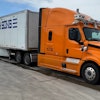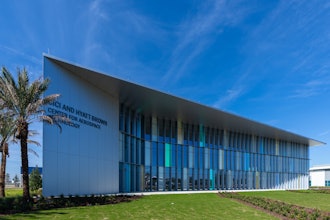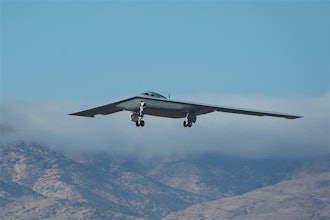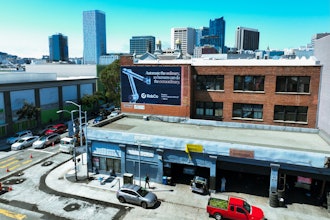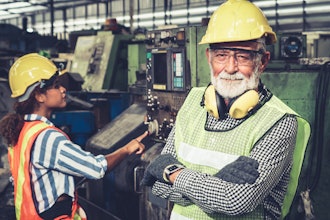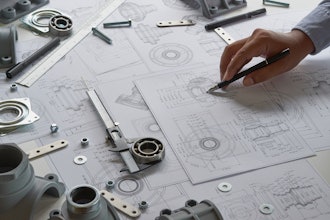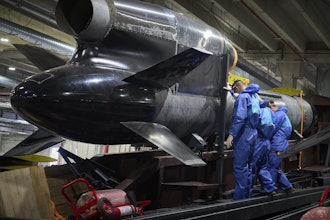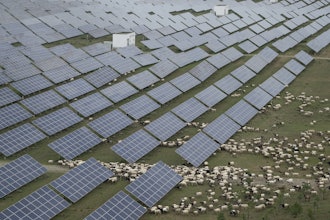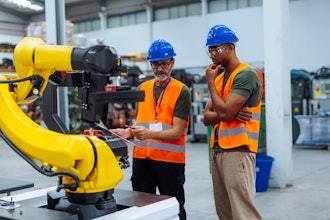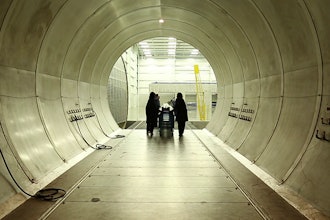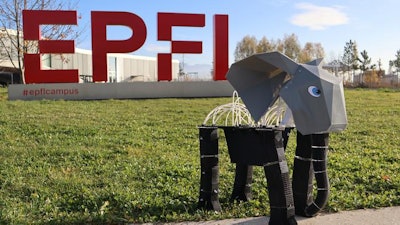
A cheetah’s powerful sprint, a snake’s lithe slither or a human’s deft grasp: each is made possible by the seamless interplay between soft and rigid tissues. Muscles, tendons, ligaments and bones work together to provide the energy, precision and range of motion needed to perform the complex movements seen throughout the animal kingdom.
Replicating this musculoskeletal diversity in robotics is extremely challenging. Until now, 3D printing using multiple materials has been one way to create soft-rigid robots, and while this approach may mimic the diversity of biological tissues, it means that key properties like stiffness or load-bearing strength can’t be controlled continuously across a robotic structure.
Now, a team led by Josie Hughes in the Computational Robot Design and Fabrication Lab (CREATE) in EPFL’s School of Engineering have developed an innovative lattice structure that combines the diversity of biological tissues with robotic control and precision. The lattice, made of a simple foam material, is composed of individual units (cells) that can be programmed to have different shapes and positions. These cells can take on over one million different configurations and even be combined to yield infinite geometric variations.
Postdoctoral researcher Qinghua Guan said, “We used our programmable lattice technique to build a musculoskeletal-inspired elephant robot with a soft trunk that can twist, bend and rotate, as well as more rigid hip, knee and foot joints. This shows that our method offers a scalable solution for designing unprecedentedly lightweight, adaptable robots.” The research has recently been published in Science Advances.
Two programming dimensions; infinite geometric variations
The team’s programmable lattice can be printed using two main cell types with different geometries: the body-centered cubic (BCC) cell and the X-cube. When each cell type is used to 3D-print a robotic ‘tissue’, the resulting lattice has different stiffness, deformation and load-bearing properties. But the CREATE Lab’s method also allows them to print lattices made of hybrid cells whose shape lies anywhere on the spectrum between BCC and X-cube.
PhD student Benhui Dai said, “This approach enables the continuous spatial blending of stiffness profiles and allows for an infinite range of blended unit cells. It’s particularly suited for replicating the structure of muscular organs like an elephant trunk."
In addition to modulating each cell’s shape, the scientists can also program their position within the lattice. This second programming dimension allows them to rotate and shift (translate) each cell along its axis. The cells can even be superimposed onto each other to create entirely new cell combinations, giving the resulting lattice an even wider range of mechanical properties. To give an idea of the sheer scale of potential variations, a lattice cube with four superimposed cells can yield around 4 million possible configurations, with over 75 million configurations for five cells.
Waterproof and sensor-ready
For their elephant model, this dual programming capability enabled the fabrication of several different tissue types with unique ranges of movement, including a sliding plane joint (found in the small bones of the foot), a bending uniaxial joint (found in the knee) and two-way bending biaxial joint (found in the toes). The team was even able to replicate the complex motion of an elephant’s muscular trunk by engineering separate lattice sections dedicated to twisting, bending and rotating movements, while maintaining smooth and continuous transitions between them.
Hughes says that in addition to modifying the foam material or incorporating new cell shapes, their unique foam lattice technology structure offers many exciting possibilities for future robotics research. “Like honeycomb, the strength-to-weight ratio of the lattice can be very high, enabling very lightweight and efficient robots. The open foam structure is well-suited for motion in fluids and even offers potential for including other materials, like sensors, within the structure to provide further intelligence to foams.”

